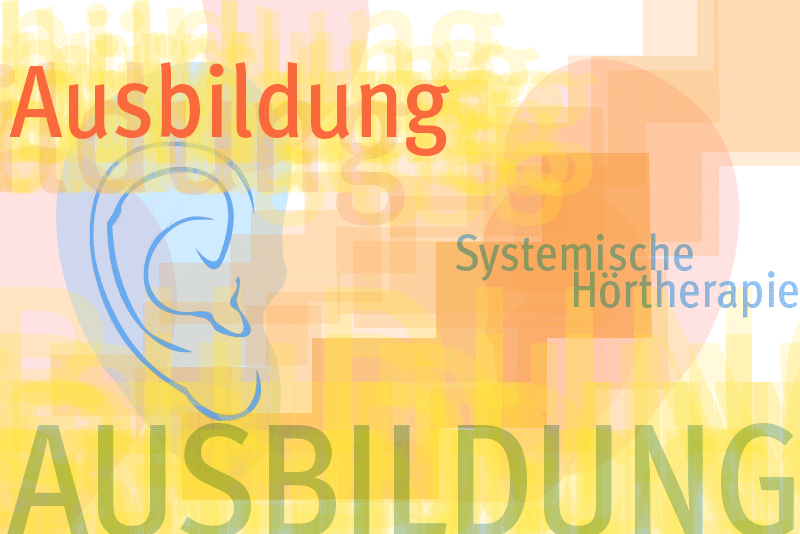Structure of the Training program
The training program is a 2 years program divided into 2 sections.
The Basic Course is taught during the first year, and the Advanced Course is taught during the second year. The basic and advanced courses comprise approximately 500 teaching hours.
The program is the most comprehensive program available in this field. There is good reason for this. The program is divided into:
- Basic course (GK 1-3) three 4-day training seminars. Upon completion of this portion the participant will have become a qualified “Listening Therapy assistant” and can begin to work in a Listening Therapy practice.
- Advanced course(AK1-4) four 4-days training seminars. Upon completion of the advanced course the participant will have become a “Listening Therapist”. This enables them to head their own practice or to work in an existing practice with more advanced qualifications. Added responsibilities may include writing therapy plans, interpreting of listening profiles, active listening therapy sequences and leading discussions with clients. Most other programs allot too little time for these areas.
The 6th Continuing Education Training session begins with the Basic Course at the end of August 2017; for dates please refer to Continuing Education Training/Dates.
As long as an interested party has completed a basic course according to Dr. A. Tomatis, he/she may participate in any of the continuing education seminars. If a participant completes the entire advances course, they will have earned the title of “Listening Therapist” from Auris Integralis.
For a detailed structure and description of the Systemic Listening Therapy Continuing Education Basic and Advanced Courses, refer to Course Content.
Training goals
Our participants will learn to analyze and understand auditory perception by working with individuals who suffer from an impaired auditory perception.
Through Systemic Listening Therapy, participants will learn the therapeutic method that improves auditory processing and auditory perception with this targeted intervention.
They will accompany a therapeutic process that enables their clients to develop their own personality and their communicative potential. The basic course entitles participants to competently work in an existing Listening Therapy practice.
Only by completing the advanced course the participant will be qualified to practice Systemic Listening Therapy independently.
Basic Course Content
Basic Course 1: “Listening Adventure - a systematic view of hearing and development”
Using various sound mediums to experience listening
Basic principles of the Electronic Ear
Anatomy and physiology of hearing
The structure and functional principles of the brain Part I
Central Auditory Processing and perception
The structure and sequence of Systemic Listening Therapy
Therapy as a developmental support
Basic Course 2: “Diagnostics Part 1 and child development Part 1 and 2”
Prenatal development and the early communication
Sensorimotor development in year 1 and 2.
The early development of the “self” - Self-awareness and the ability to relate”
Experiencing sounds and the body
The structure and function of the vestibular system
Diagnostics Part 1: Creating a listening profile
Working with the Electronic Ear
Basic Course 2: “Listening Therapy Part 1, Diagnostics Part 2, Child development Part 3”
Childhood and adolescent development
Initial examination of client: structure and implementation
Determining audiolaterality
The dynamic structure of listening therapy: Effects
How to structure the therapeutic relationship and the framework of listening therapy
Order of treatment
Music and sound medium of listening therapy
Final Exam for Systemic Listening Therapy Assistantship
Advanced Course Content
Advanced course 1: “Listening and motor skills”
“Wie feel, therefore we must hear” (Spitzer)
The vestibular system
Motor development and diagnostics
Breath-Voice and Body sound
Advanced course 2: “Listening and Speech”
Language development “from making sounds to writing”
Experiencing the active phases with and without the DEE/EO
Initiation of language in Systemic Listening Therapy (why, when, which setting)
Learning disabilities (ex. dyslexia, dyscalculia) and Systemic Listening Therapy
Attention problems (ex. ADD/ADHD, concentration problems): theory and testing procedures, treatment methods with
systemics listening therapy
Language and speech disorders (ex. stuttering, aphasia, dysphonia): Treatment methods and case studies.
Advanced course 3: “Listening and psychodynamics”
Listening profile interpretation based on psychological aspects
The basics of “Depth Psychology” (psychoanalysis, C.G. Jung, humanistic psychology, attachment theory)
Modern systemic psychotherapeutic procedures
The neuropsychological correlation to psychodynamics
Self-image, the concept of “self efficacy” and systemic listening therapy
Psychopathology
The listening therapeutic approach from a psychodynamic point of view
Advanced course 4: “Synopsis”
Design and implementation of various therapies
In-depth case studies
A detailed and complete presentation and discussion of a case study (whenever possible with video documentation).
Final examination to become Systemic Listening Therapists
Didactics
Lessons are structured in the form of lectures, self experience, joint discussions, internships, group work and case studies. Learning is optimized through the use of visualization techniques and video tutorials. The content is designed in the form of a spiral curriculum, i.e. certain topics are the main theme throughout the course. As the course progresses these topics become increasingly more differentiated and complex as they are tied in with new materials. During the course of the training a written work has to be completed by each participant (usually a case study). Both the basic and advanced course end with a final examination.


